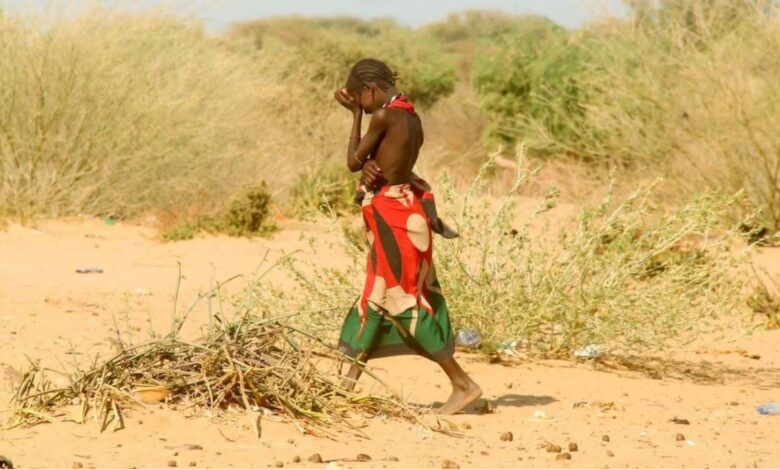Betrayed by the Flag: A Story of Betrayal and Survival in Kainuk

Eleven-year-old Akai wore the flag like a dress — not sewn, just wrapped clumsily around her thin frame,
pinned at the shoulder with a rusted safety pin and tied at the waist with a fraying shoelace.
Red, black, green, and white.
The colors of a nation. A symbol of unity. A promise.
Akai lived in Kainuk — a place spoken of like a myth, a word whispered with fear and fatigue.
Here, “orphan” was not whispered anymore; it was worn like a name tag.
Her mother was killed last year.Her father had vanished before that,
taken by the same violence
that now haunted the village like a shadow.
Each morning, she stood on the same patch of dry earth,
barefoot, her eyes too old for her age.
The flag around her flapped weakly in the wind,
as if it too was tired of waving.
She had found it in the rubble of the chief’s office
after it was raided and burned.
They destroyed everything — papers, uniforms, books —
but not the flag.
She took it, believing it meant something.
That Kenya still saw her.
While the rest of the country spoke of
affirmative action and scholarships for girls,
Akai learned to survive gunfire.
Her empowerment came not in classrooms,
but in trenches.
She dodged bullets while others prepared for exams.
One afternoon, a convoy of journalists arrived —
staying just long enough for a few photos.
And stories, Akai stood before them,
defiant in her flag.
“Why do you wear the flag?” a woman asked,
kneeling to her level.
Akai looked toward the hills
where gunfire echoed each night.
“Because I thought it would protect me,” she said.
“And does it?”
Akai rubbed dirt into the white stripe.
“No,” she whispered. “It lies.”
That night, gunfire returned.
A nearby village burned.
Akai didn’t sleep.
In her dreams, the flag became a shroud
–
not of honor, but of betrayal.
She had believed it stood for peace, for justice,
for protection.
But it wasn’t
In Kainuk, the war wore no uniforms.
It wore hunger.
Fear.
Silence.
And sometimes, the face of someone you once knew —
now holding a rifle.
At dawn, Akai folded the flag,
laid it on a rock at the edge of her compound,
and walked away barefoot.
She never returned.
Years later, when peace began to stir again —
not as a headline, but as a slow, tender breath —
people spoke of the girl in the flag.
Some said she became a fighter.
Others whispered she joined a women’s group in Lodwar,
teaching survivors to grow food again.
No one knew for sure.
But they remembered her —
not for her name,
but for what she wore:
a flag that betrayed her,
and a heart that chose to live anyway.



